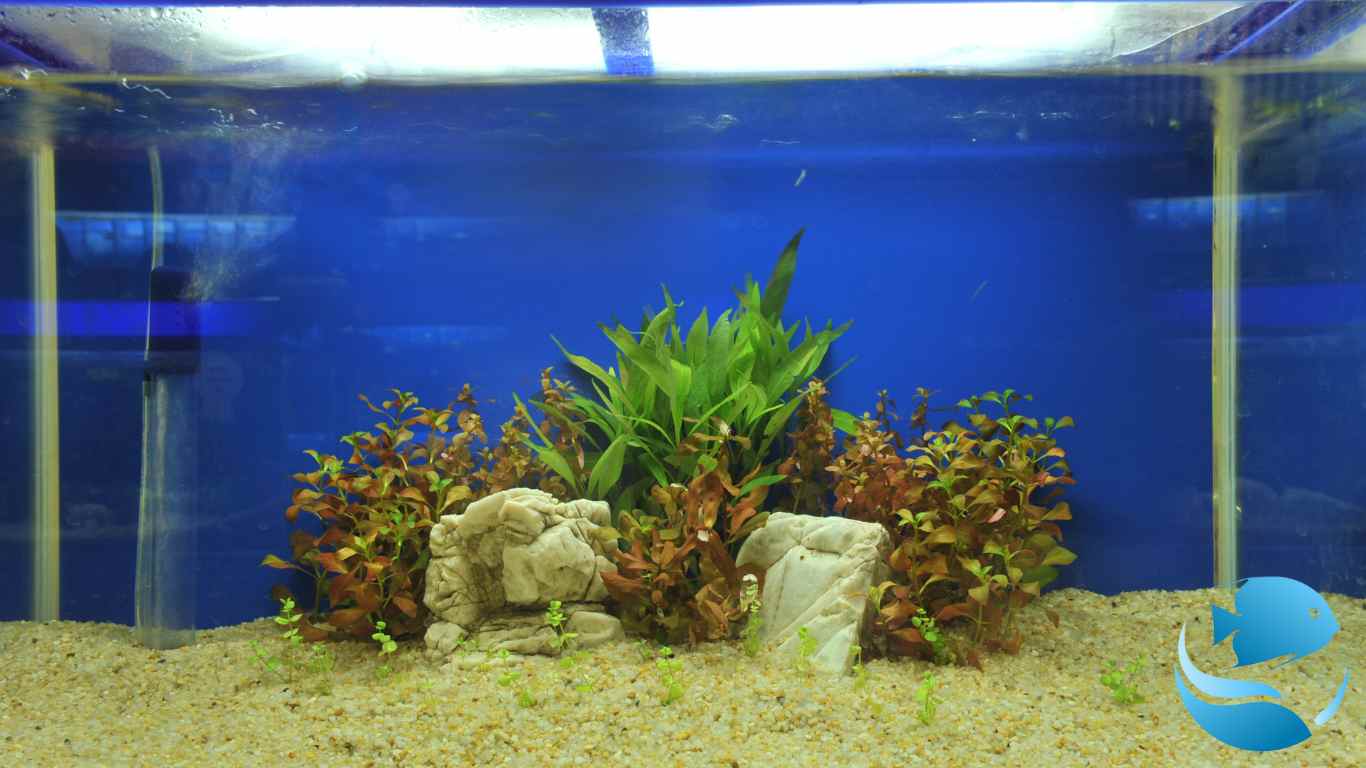
In an aquarium, it is advisable to use natural sand with a fine grain size and naturally eroded or non-sharp edges.
Different types of sand are available for your aquarium setup. Many colors, grain sizes and textures are available.
Sand Color
The color of sand for an aquarium is a personal aesthetic choice that is not debatable. However, there are a few things to keep in mind:
A fish will naturally darken on dark or black soil. If you want to keep the brightest possible colors in your fish, always choose a light-colored floor.
A light floor reflects some of the light upwards. On a planted aquarium this can be an advantage to have more light in the lower parts of the plants and thus keep the foliage denser at this level.
Bright colors can sometimes be a source of stress for more sensitive or shy fish varieties.
Ganulometry
The choice of the granulometry of the sand is important to facilitate the maintenance of this one and a good rooting of the plants:
The good granulometry of the grains is around 1-2 mm. This corresponds to the numerous quartz available as well as the Loire sands.
This granulometry is easy to maintain and allows a good rooting of the plants while allowing a good water circulation in the ground.
A soil that is too coarse traps waste and sediment and quickly becomes very complicated to clean. Eventually, the trapped sediments are a source of nitrates that are harmful to the aquarium’s equilibrium.
Sand that is too fine tends to clog and harden. It does not promote good water circulation and can become a source of bad fermentation by developing anaerobic bacteria.
Sand Choice impact on plant roots
Plant roots are unable to grow in these conditions and fermentation can be dramatic for the aquarium’s balance. Moreover, the waste accumulates enormously on the surface and is not very aesthetic after a few months.
Sand that is too fine also tends to “fly” with too much stirring or filtration and can therefore be harder to keep in the desired location.
The nature of the sand itself is also very important and will allow or not the maintenance in good conditions of certain species of fish or plants:
A naturally eroded sand (Loire sand type) or with rounded grains (Crystal quartz of Dennerle) will allow the maintenance of bottom fish like Corydoras or Botia by allowing them to dig without cutting their barbels. Quartz, on the contrary, will be too sharp for these species.
JBL Manado sand is a neutral, light and very porous sand that favors the rooting of plants as well as a good bacterial activity at the root level.
Calcareous sands such as coral sands should be avoided in planted or Amazonian type aquariums. They will eventually release minerals that will raise the KH and will not be adapted to these biotopes. On the other hand, it will be perfect in a seawater aquarium in a thin layer or in an aquarium reproducing the great African lakes.
It is therefore essential when choosing the sand to make sure of all these elements in order not to end up with a sand that does not meet your expectations once the aquarium is finished. This would force you to start all over again from the beginning with all the constraints and work that this entails.
- Feeding Eggs To Fish - December 27, 2022
- Cure Swim Bladder Disease In Fish - December 27, 2022
- Can Damaged Fins Grow Back? - December 27, 2022
